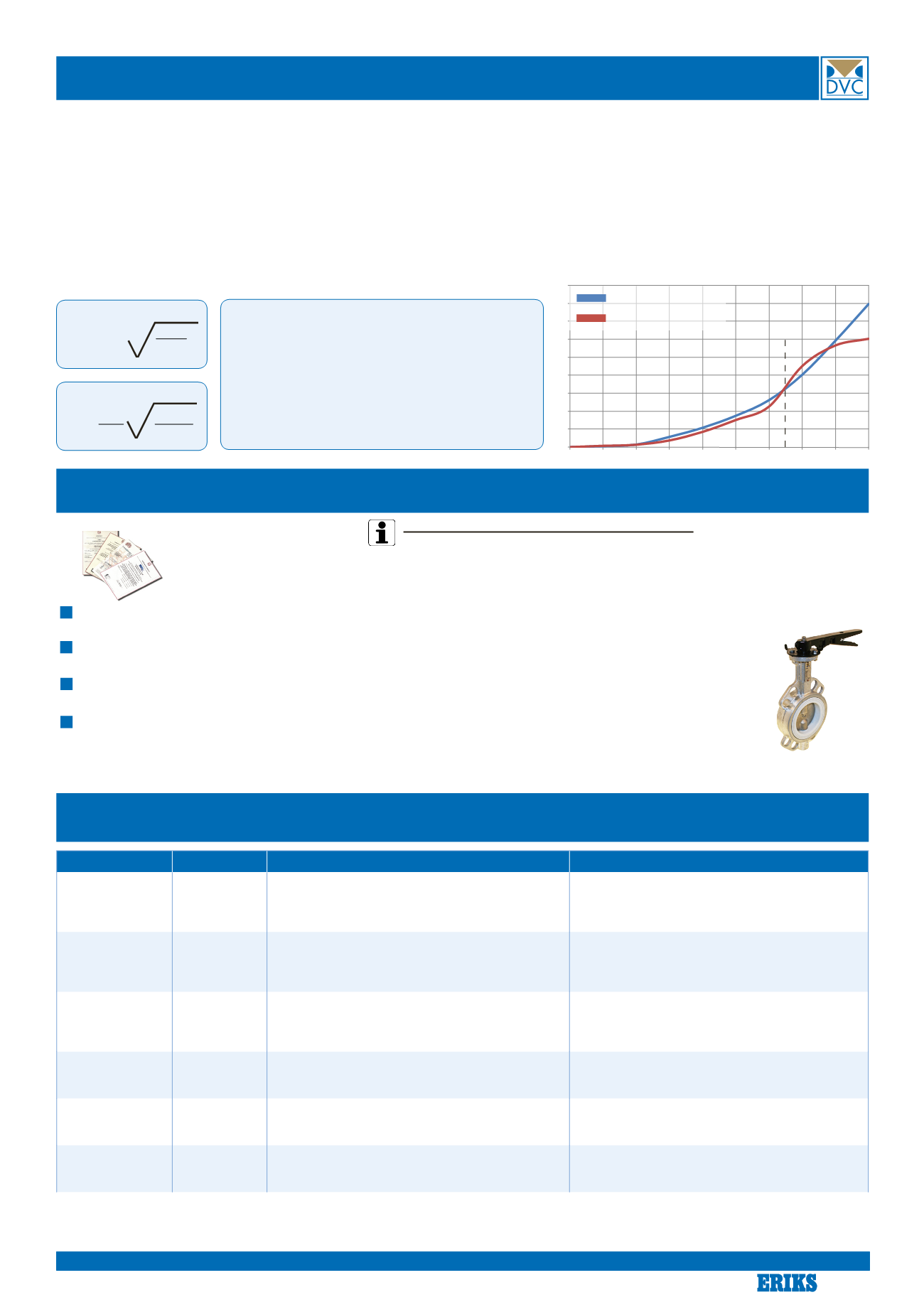
An
Company
B-2231-UK-11-2013-REV. C
0
100
200
300
400
500
600
700
800
900
0
10
20
30
40
50
60
70
80
90
Type 2231 / 2241
Type 2400
Example: DN 100
Liner
Temperature
Suitable for
Unsuitable for
EPDM
- 15 ºC
+ 120 ºC
Water, steam, alcohol, glycol, caustic soda, ozone,
food products, glycerine, milk, oxygen, air, saturated
salt, iron chloride, gelatine, dry hydrogen sulphide,
potassium chloride, sodium, magnesium chloride
Mineral oil, chlorine compounds, ketones, acetyl,
chloride, asphalt, bromine, butane, butyl, petrol,
diesel oil, acid, fish oil, freon, chlorine, natural gas,
exhaust gas, nitric acid
NBR
- 10 ºC
+ 80 ºC
Mineral oil, grease, air, seawater, gas, boric acid,
aluminium chloride, ammonia gas, citric acid, diesel
oil, fish oil, petrol, gelatine, glycerine, magnesium
chloride, lactic acid, linseed oil, natural gas
Ozone, acetone, aniline, chlorine dioxide, chromic
acid, phenol, ethyl acetate, freon 21+22+23, hot
nitric acid, styrene, hydrogen sulphide, isopropyl
acetate, oxygen, sulphuric acid
NATURAL
RUBBER*
- 30 ºC
+ 80 ºC
Abrasive medium, aluminium chloride, sugar beet
fluid, boric acid, potassium chloride, citric acid,
magnesium chloride, ferritic nitrate, formic acid,
gelatine, sugar, glycerine, lactic acid, nitrogen
Steam, aniline, asphalt, butadiene, diesel oil, eth-
ane, ethyl acetate, hydraulic oil, hydrochloric acid,
linseed oil, methane, mineral oil, oxygen, styrene,
soyabean oil, turpentine
HYPALON *
- 20 ºC
+ 75 ºC
Mineral, organic and inorganic chemicals, air,
oxygen, fish oil, glycerine, citric acid, ozone,
sodium solphate
Ammonia, diesel oil, grease, ketone, methyl,
phenol, propyl, bromine, nitric acid, tar, urea, var-
nish, lectine
SILICONE *
- 40 ºC
+ 170 ºC
Food products, ammonia gas, barium, boric acid,
potassium, bisulphite, citric acid, copper cyanide,
glycerine, nitrogen, lactic acid
Steam and hot water (max. 100º C), asphalt, diesel
oil, ethane, freon, ethyl chloride, methane, nitric
acid, olive oil, propane, turpentine
FPM
- 20 ºC
+ 170 ºC
Oil, mineral acid, grease, phosphorus, tannic acid,
gelatine, glycol, oxygen, slaked lime, carbon acid,
natural gas, pulp, salt, sugar, sulphur
Hot water, steam, ketone, ammonia gas, acetone,
formaldehyde, cellulose acetate, freon, urea,
ethanoic acid, methyl
Note: materials marked with * available on special request only.
Chart for temperature and resistance
Valve Sizing
CE - according to PED 97/23/EC
3.1 certificate according to EN 10204
NBR / EPDM certification
ATEX certification
Approvals
LINER INFO
Determining the size of butterfly valves for control purposes should not be done on the basis of the nominal diam-
eter of the pipe but should be calculated on the basis of the operating characteristics in order to attain the correct
control characteristics.
Butterfly valves Type 2231 / Type 2241 from Dansk Ventil Center are designed with approximately equal percentage
characteristics over an opening angle of 65°.
You only need to consider the opening angle when determining the size of control valves. When determining the
valve nominal diameter calculate the Kv value from the below formula:
K
V
Q
w
Δp
V
N
G
T
P
d
=
=
=
=
=
=
=
=
Flow coefficient.
Max. flow volume in m
3
/h.
Exact weight in kg/dm
3
.
Pressure drop in bar.
Max. flow in Nm
3
/h.
Exact weight in kg/Nm
3
.
Absolute temp. in ° Kelvin.
Absolute pressure downstream in bar
K
V
= Q x
Δp
Liquid:
K
V
=
V
N
514
G x T
Δp x p
d
Gas:
w
Rubber liners (NBR, EPDM and FPM):
Rubber will over time loose flexibility and compression set. The
higher the temperature rubber is installed in, the shorter the
expected lifespan is. Our values for temperature is given to the
best of our knowledge, and we advice that valves are tested
for lifespan if installation is running near the given temperature
limit. If in doubt, please consult us.
Know-how makes the difference
17


